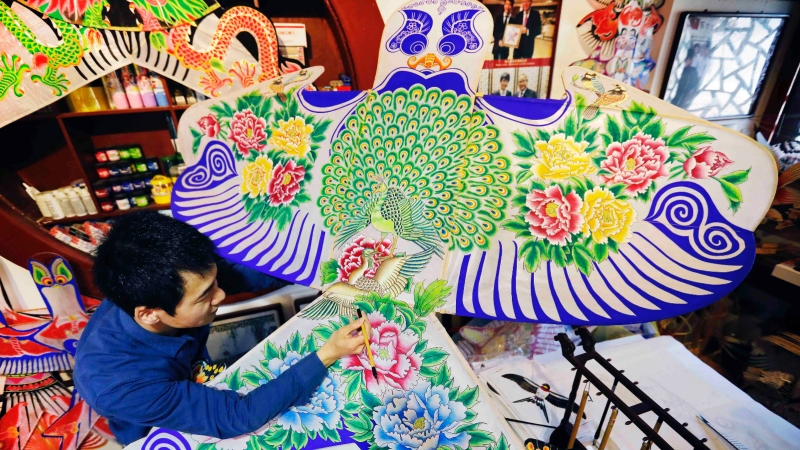Kite-flying is a popular pastime during the Qingming Festival in April, when people worship their ancestors and engage in various rites. One of these sees people cut the strings of a kite to symbolize the release of evil spirits and negative energy, paving the way for better fortune in the coming months.
One of China's most famous men of letters was also an expert at making kites – and his legacy in both realms lives on today.
Cao Xueqin was an 18th century novelist and poet who is best known for authoring "Dream of the Red Chamber," one of the four great classics of Chinese literature. Twelve years ago, Cao's Kite was classified as a national intangible cultural heritage item, and now others are helping to preserve it. Miao Bogang, a fourth-generation inheritor of this specific kite, waxes lyrical about its creator and his philanthropic ambitions.
05:30

“When it comes to Cao's Kites, we have to mention Cao Xueqin, the author of "Dream of the Red Chamber." In his later years, Cao wrote a book about kites. That systematically recorded the process of tying, pasting and painting kites, as well as explaining the principles behind keeping them airborne. His main intention in writing this book was to help the disabled and the poor rely on their own skills and ultimately support themselves (by making and selling kites),” Miao said.
His passion for kites started when he was just six years old, when Miao's father made him his first one. He later trained as a painter while in college. After arriving in Beijing upon graduating, Miao met a national representative inheritor of this ancient craft through an exhibition of kite art. That artisan, Kong Lingmin, is still his mentor two decades later.

Miao Bogang paints a kite. /Miao Bogang
Miao Bogang paints a kite. /Miao Bogang
In representative works of Cao's Kites, according to Miao, those shaped like a fat swallow symbolize a man, while a thinner version of the same bird denotes a woman. Smaller versions can be added to represent boys and girls until a whole family of kites are born.
"Each kite needs to be painted at least 3-5 times, because we try to focus on the effect they have while being flown. They should still be eye-catching and visible at a distance of three or four kilometers. The contrast between light and dark areas must be very clearly drawn," he said.
Four basic skills must be mastered to create a good kite: tying the framework, pasting the paper, drawing the pattern, and of course flying it.
"Because our works are handmade, it takes at least 10-15 days to complete a five-foot-long kite," said Miao.

Miao Bogang paints a kite. /Miao Bogang
Miao Bogang paints a kite. /Miao Bogang
Born in the 1980s, Miao said he still feels young at heart. He hopes younger generations can continue enjoying this art and join his team in inheriting, promoting and developing traditional Chinese culture. He sees protecting this not just as a team effort, but a generational responsibility.